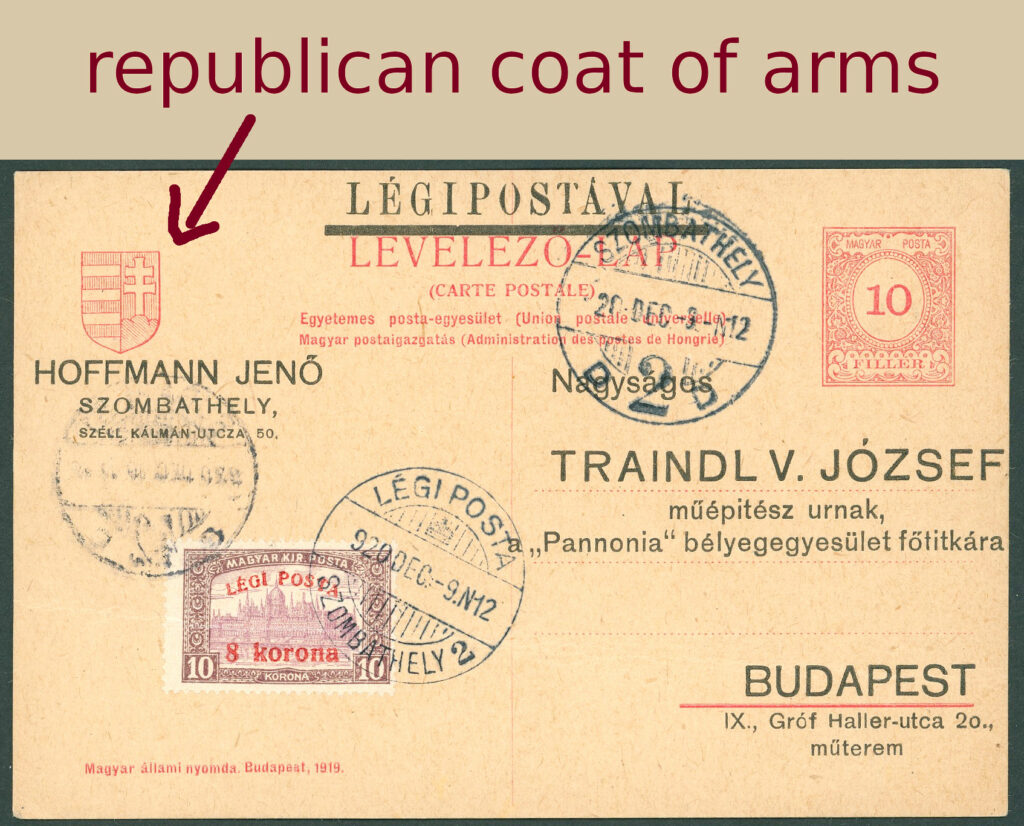The Hungarian postal stationery (issued in 1919) with the 10 fillér denomiantion and Republican coat of arms is rarely seen. If Jenő Hoffmann, as an avid airmail collector, had not used several of these, they would be one of the greatest postal stationery rarities. Even so, if the opportunity arises, it is well worth grabbing and acquiring, as only 1-2 of these postal stationery change hands every year…

























